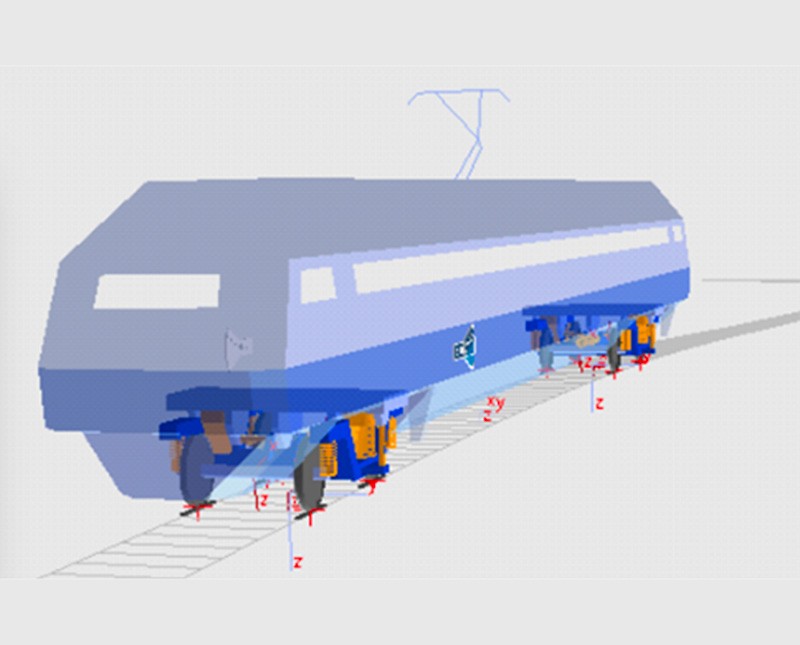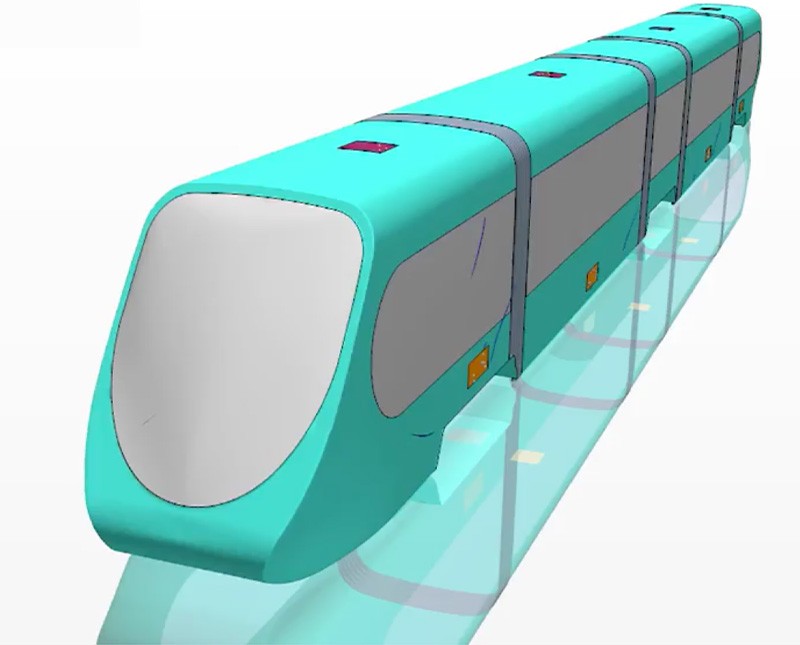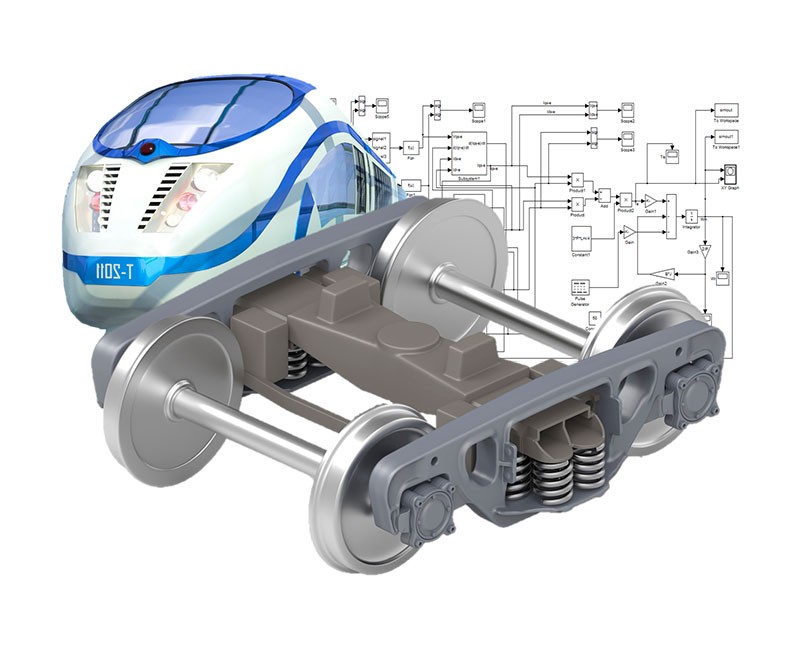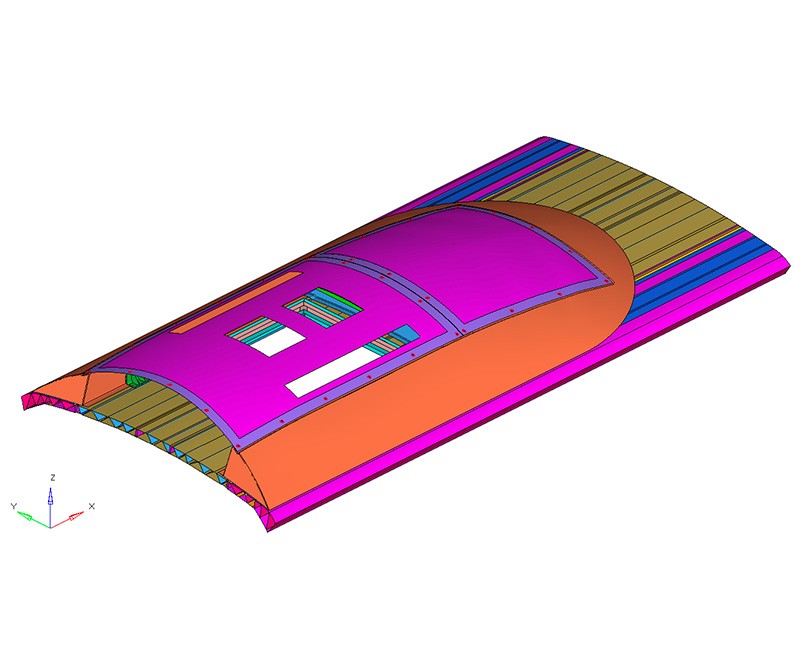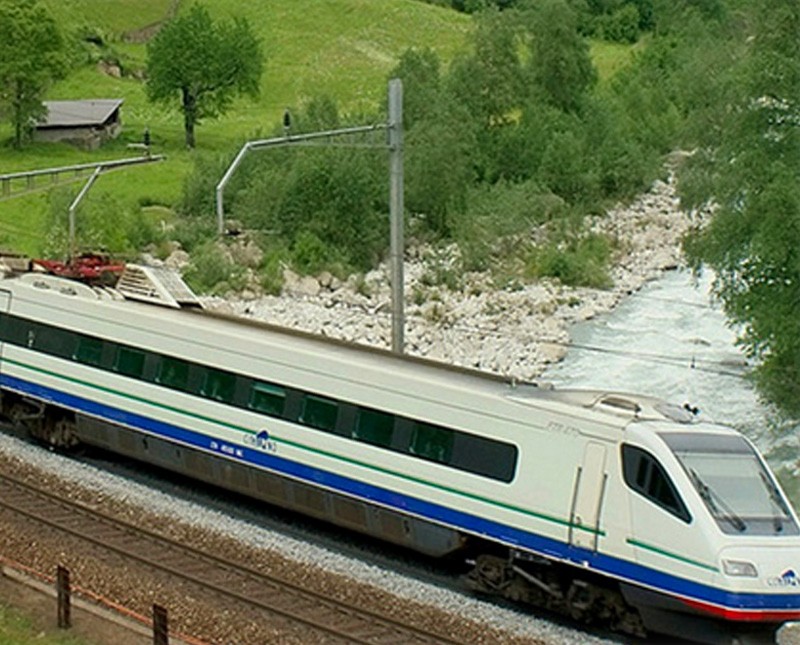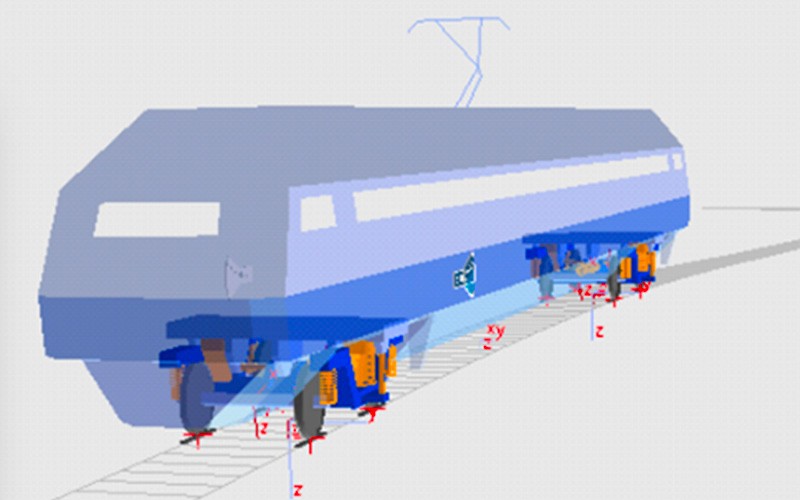
Vehicle
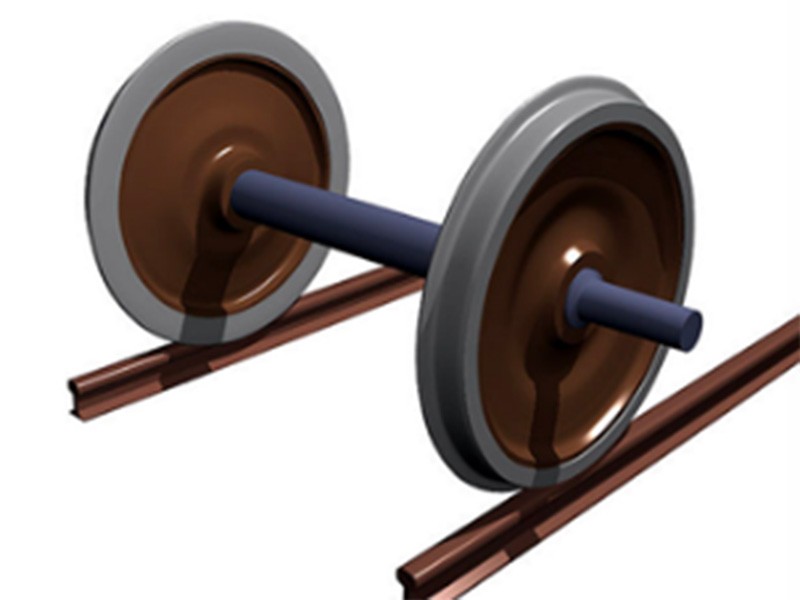
Wheelset
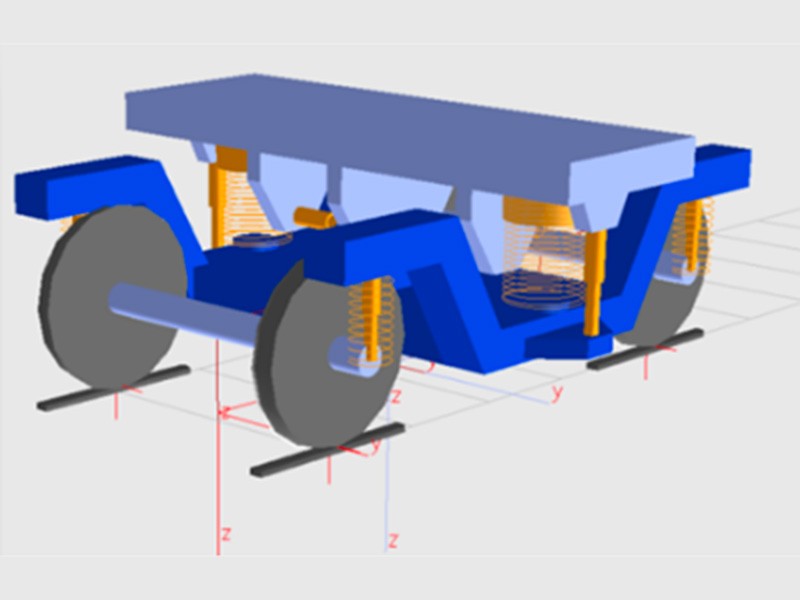
Bogie
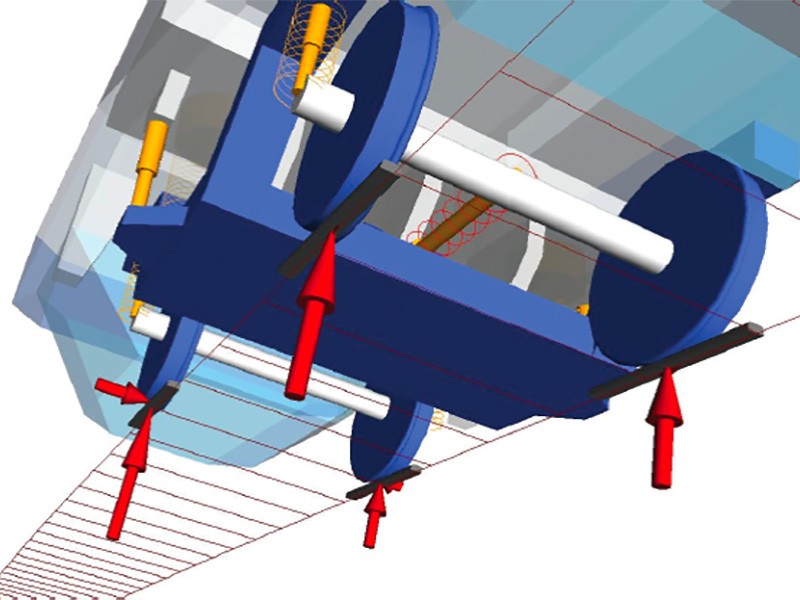
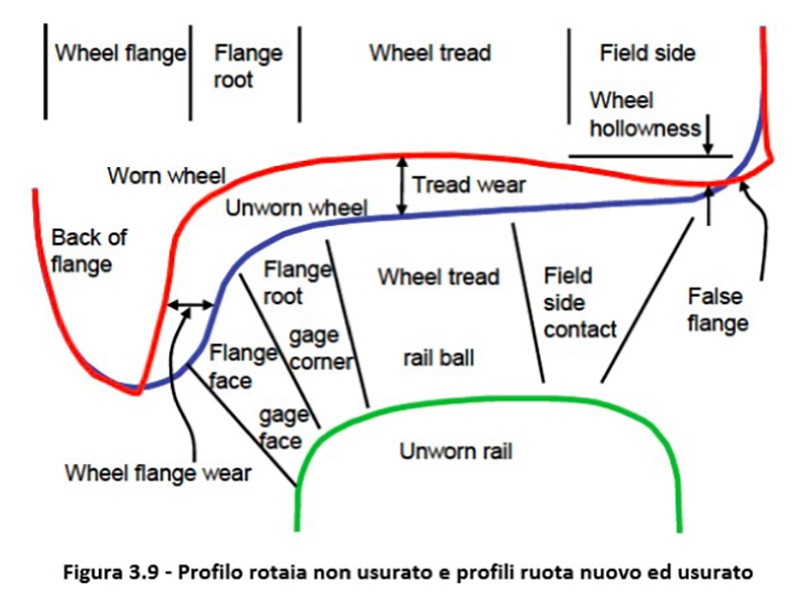
New (no wear) rail profile with new and worn wheel profiles
Main target
AMET’s activities in railway sector apply to several topics, related to the different structural and functional aspects of the vehicle. An integrated vision of the vehicle-track system well suits AMET’s ability to integrate the various skills and to apply design, simulation and calculation capabilities in a transversal and complementary way, for testing and optimizing performance.
Railway Dynamics – Overview
- In the context of virtual analysis, the Railway Dynamics is investigated by means of a computational approach, modelling the whole vehicle with MultiBody Systems (MBS), mainly to evaluate the vehicle stability (for safety purposes), and the ride quality (for passenger comfort).
- In particular, linear and non-linear analysis are performed: modal analysis (normal modes, frequencies and damping), curving quasi-static analysis.
- Furthermore, since the running behavior of railway vehicle has to be investigated in terms of track-vehicle system, the study of wheel/rail interaction, by means of a contact approach, is crucial. Therefore, also simulations aimed to evaluate the wheel/rail contact forces and wear of contact surfaces are performed, with different wheel and rail profile coupling, with and without irregularities.
- Simulations with different track load conditions: Yqst, Qqst, Qmax.
Benefits
The model-based methods are a virtual analysis and testing tool that has long supported the physical in-line tests, to evaluate the dynamic behavior of railway vehicles, aimed to train homologation or vehicle performances optimization.
For the railway dynamics evaluation AMET leverages the expertise in dedicated MBS simulation codes and extensive experience in road vehicle dynamics.


